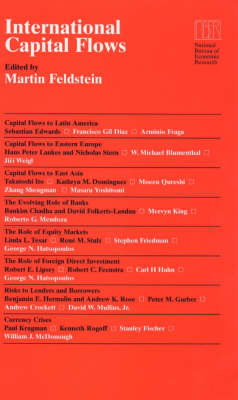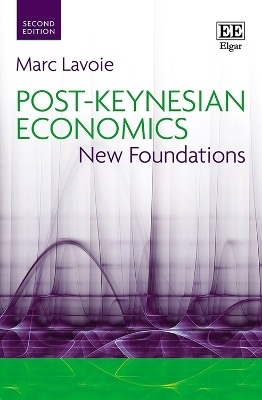
International Capital Flows
Seiten
1999
University of Chicago Press (Verlag)
978-0-226-24104-3 (ISBN)
University of Chicago Press (Verlag)
978-0-226-24104-3 (ISBN)
- Titel z.Zt. nicht lieferbar
- Versandkostenfrei innerhalb Deutschlands
- Auch auf Rechnung
- Verfügbarkeit in der Filiale vor Ort prüfen
- Artikel merken
This work examines the experience of capital flows to Latin America, Asia and Eastern Europe. The papers discuss the role of banks, equity markets and foreign direct investment in international capital flows, and the risks that investors and others face with these transactions.
Recent changes in technology, along with the opening up of many regions previously closed to investment, have led to explosive growth in the international movement of capital. Flows from foreign direct investment and debt and equity financing can bring countries substantial gains by augmenting local savings, and by improving technology and incentives. Investing companies acquire market access, lower cost inputs and opportunities for profitable introductions of production methods in the countries where they invest. But, as was underscored recently by the economic and financial crises in several Asian countries, capital flows can also bring risks. Although there is no simple explanation of the currency crisis in Asia, it is clear that fixed exchange rates and chronic deficits increased the likelihood of a breakdown. Similarly, during the 1970s, the United States and other industrial countries loaned OPEC surpluses to borrowers in Latin America. But when the US Federal Reserve raised interest rates to control soaring inflation, the result was a widespread debt moratorium in Latin America as many countries throughout the region struggled to pay the high interest on their foreign loans.
This work contains recent work by scholars and practitioners on the experience of capital flows to Latin America, Asia and Eastern Europe. The papers discuss the role of banks, equity markets and foreign direct investment in international capital flows, and the risks that investors and others face with these transactions. By focusing on capital flows' productivity and determinants, and the policy issues they raise, this collection should prove a useful resource for economists, policymakers and financial market participants.
Recent changes in technology, along with the opening up of many regions previously closed to investment, have led to explosive growth in the international movement of capital. Flows from foreign direct investment and debt and equity financing can bring countries substantial gains by augmenting local savings, and by improving technology and incentives. Investing companies acquire market access, lower cost inputs and opportunities for profitable introductions of production methods in the countries where they invest. But, as was underscored recently by the economic and financial crises in several Asian countries, capital flows can also bring risks. Although there is no simple explanation of the currency crisis in Asia, it is clear that fixed exchange rates and chronic deficits increased the likelihood of a breakdown. Similarly, during the 1970s, the United States and other industrial countries loaned OPEC surpluses to borrowers in Latin America. But when the US Federal Reserve raised interest rates to control soaring inflation, the result was a widespread debt moratorium in Latin America as many countries throughout the region struggled to pay the high interest on their foreign loans.
This work contains recent work by scholars and practitioners on the experience of capital flows to Latin America, Asia and Eastern Europe. The papers discuss the role of banks, equity markets and foreign direct investment in international capital flows, and the risks that investors and others face with these transactions. By focusing on capital flows' productivity and determinants, and the policy issues they raise, this collection should prove a useful resource for economists, policymakers and financial market participants.
Martin Feldstein (1939-2019) was the George F. Baker Professor of Economics at Harvard University. From 1977 to 2008 he was president and CEO of the National Bureau of Economic Research. He was chairman of President Ronald Reagan's Council of Economic Advisers from 1982 to 1984. In 2006 he was appointed to the President's Foreign Intelligence Advisory Board under George W. Bush, and in 2009 he was named to the President's Economic Recovery Advisory Board by Barack Obama. He was the editor of many books published by the University of Chicago Press.
| Erscheint lt. Verlag | 1.2.2000 |
|---|---|
| Reihe/Serie | (NBER) National Bureau of Economic Research Conference Reports |
| Sprache | englisch |
| Maße | 16 x 23 mm |
| Gewicht | 680 g |
| Themenwelt | Wirtschaft ► Volkswirtschaftslehre ► Finanzwissenschaft |
| Wirtschaft ► Volkswirtschaftslehre ► Makroökonomie | |
| ISBN-10 | 0-226-24104-1 / 0226241041 |
| ISBN-13 | 978-0-226-24104-3 / 9780226241043 |
| Zustand | Neuware |
| Informationen gemäß Produktsicherheitsverordnung (GPSR) | |
| Haben Sie eine Frage zum Produkt? |
Mehr entdecken
aus dem Bereich
aus dem Bereich
eine Einführung in die Staatsfinanzen
Buch | Hardcover (2024)
Vahlen (Verlag)
39,80 €
and why it doesn't work the way we think it does
Buch | Softcover (2023)
Pan Books (Verlag)
13,70 €
New Foundations
Buch | Softcover (2022)
Edward Elgar Publishing Ltd (Verlag)
64,75 €


